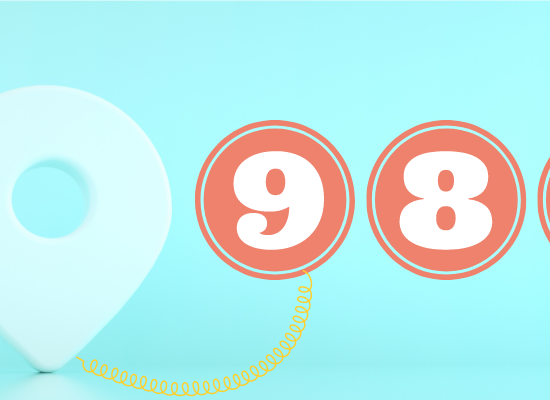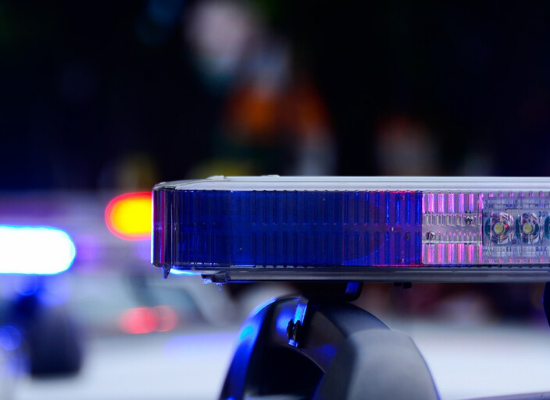
Stephanie Hepburn is a writer in New Orleans. She is the editor in chief of #CrisisTalk. You can reach her at .
In the summer of 2020, Los Angeles—like the rest of the United States—was knee-deep in the Covid pandemic. Amid the disaster, day after day, tens of thousands of protesters gathered throughout the city, distraught and outraged by another plague upon our nation: racism. Protests were sparked by the killing of George Floyd by four Minneapolis police officers. “The moment pushed LA County to lean even harder into finding alternatives to justice system involvement,” says John Franklin Sierra, Ph.D., senior staff analyst at the Los Angeles County Department of Mental Health.
Good intentions alone, though, says Dr. Sierra, a health systems engineer, won’t solve systemic issues. That’s why community stakeholders, county leaders, law enforcement, faith leaders, and advocates got together to take a closer look at the justice system and reframe safety and community health. The workgroup used a modified version of the Sequential Intercept Model to trace how people with mental health and substance use issues come into contact and move through the criminal justice system.
In the report “Care First, Jails Last,” the Alternatives to Incarceration workgroup puts forth recommendations that incorporate key interception points: community services, community response and intervention services, law enforcement, first booking and court appearance, jail custody and court process, pre-release and release, and supervision in the community. The workgroup evaluated seven intercepts instead of six. “Even before Intercept 0, there are a whole host of health factors communities need to address like people’s employment status and social connections,” says Dr. Sierra.
While the workgroup was in the process of intercept mapping, putting together recommendations, and taking in feedback from the community, Dr. Sierra and his colleagues had been analyzing the county’s network of mental health treatment beds and existing gaps. “We quickly realized the problem wasn’t just about not having enough hospital beds,” he says. “There also weren’t enough resources on the front end to keep people out of hospitals or on the back end to get people out of hospitals and into longer-term care.” Consequently, people were getting stuck or unnecessarily ending up in a psychiatric hospital, creating excess demand.
Janice Hahn, Los Angeles County Supervisor, quickly realized the nexus between the two projects. “Together,” says Dr. Sierra, “we started to examine the overall crisis system so that the default for people in crisis doesn’t continue to be the emergency room, inpatient hospitalization, or jail.” That’s what guided LA County, led by the Department of Mental Health, to develop an Alternative Crisis Response, a redesign and reengineering of the existing crisis system.
In coordination with the CEO’s Alternative to Incarceration Office, Dr. Sierra and his colleagues at the Department of Mental Health have conceptualized the crisis system with improved pathway flow and interconnections between system pieces. “We can’t simply build more capacity—whether that’s call center, mobile crisis, or crisis stabilization capacity—and expect the system to work better,” he says. “To produce different results, we also need to change the structure and inner workings of the system.”
Community members were explicit, points out Dr. Sierra, that reformation of the system does not repeat the current pattern seen across the United States, where law enforcement are the primary first responders to a mental health crisis. “Just like any other health emergency, people deserve an appropriate healthcare response,” he says. “Law enforcement shouldn’t be on the scene of a mental health crisis unless there’s a clear, logical reason to have the presence of an armed public servant.”
By summertime, talk of 988 was buzzing in the suicide prevention and mental health community. In June 2020, FCC chairman Ajit Pai announced the agency was taking steps to establish 988 as the nationwide 3-digit number for mental health, substance use, and suicide crises. The number would mirror what 911 is for medical emergencies. The following month, the FCC adopted rules that require all phone service carriers to start directing 988 calls to the existing SAMHSA-funded National Suicide Prevention Lifeline by July 16, 2022. “We’d already started doing the work to examine our crisis system in LA County,” says Dr. Sierra. “988 was the icing on the cake.”
“Suddenly, with 988, there was a nationwide push to offer the kind of alternative to 911 our community had been asking for; it boosted our efforts.”
As Dr. Sierra, his colleagues, and partners began to put together the redesign, he was surprised by the close congruence between the various groups. Groups that don’t always see eye to eye. “We agree on where the system disconnects are and where we need to go,” he says. Yet, despite the alignment, the committee had a tremendous amount of ground to cover, including connecting the many entities that must be joined together to effectuate a comprehensive and efficient crisis system. “That includes the 911 public safety answering points, law enforcement, and EMS.”
He points out that community leaders are far more used to talking about capacity and the need to increase crisis services. However, the interconnections between pieces of the system are equally important. “The strength and quality of those linkages,” he says, “is paramount to system redesign.” For example, the new crisis system’s potential is dependent on the reliability with which calls can be diverted from 911 and first responders. “We also have to figure out the logistics of how we would actually do that in a very large county with a very complicated emergency response system.”
One approach to improve connections between first responders and behavioral health crisis services is to integrate clinicians on the 911 call center floor. For example, in Austin, Integral Care’s EMCOT clinicians are co-located and work on the same platform as the call center, which “has been transformative and allows for quick response times,” said Marisa Aguilar, LPC, practice manager of Integral Care’s EMCOT. However, that wouldn’t work, at least not across the board, in LA County, which has 78 primary 911 public safety answering points. “So we’ve had to find another way to operationalize pathway flow from 911 to other systems,” says Dr. Sierra, “and then develop an actual implementation and training plan.”
He points out that pathways within behavioral health crisis services also need to be developed and strengthened. For example, in Los Angeles, 988 calls will be answered by Didi Hirsch Mental Health Services. However, the call center isn’t connected to the county’s largest mobile crisis response, which Dr. Sierra’s department runs. Instead, the Department of Mental Health dispatches mobile crisis through its own call center. “Didi Hirsch provides crisis counseling over the phone, and we dispatch mobile crisis services,” he says.
“Our services complement one another, and while we are partners, there’s been a disconnect in the design of the pathways between our organizations that we’ve had to address.”
Dr. Sierra and his colleagues have diagrammed the county’s current system and discovered significant inefficiencies and lack of linkages like that missing between the Department of Mental Health and Didi Hirsch. The diagram also reveals that 911 law enforcement PSAPs have an overwhelming number of paths they can take with behavioral health calls. Six lines come out of the 911 PSAP box that lead to a variety of responses, including law enforcement, co-response, the planned LA City CAHOOTS pilot, the 911 Fire/EMS PSAP, the LA City 911 diversion pilot, and the direct line for mobile crisis.
To streamline the pathway flow, the committee has created a countywide call diversion model for the 78 primary 911 PSAPs. Nationwide, 911 call classification codes are both -over and under-specific. For example, Dr. Rebecca Neusteter shared with #CrisisTalk in May that she worked in a jurisdiction in New York that had 150 call-taking codes. Yet, the most frequently used code was “other.” Dr. Neusteter is the executive director at University of Chicago’s Health Lab and former policing program director at the Vera Institute of Justice.
Dr. Sierra says that’s why emergency operators, call takers, and dispatchers need a crisis call assessment matrix that makes for easy decision-making on when to route a call elsewhere. “It’s a chaotic environment with high stakes,” he says. “That requires a strong, valid algorithm.” He and the committee based their matrix on an existing 911 diversion effort between the Los Angeles Police Department and Didi Hirsch Mental Health Services. The LAPD’s call center covers the entire city of Los Angeles, roughly 4 million people, making it the largest PSAP in the county.
In the LAPD 911-Didi Hirsch pilot, dispatchers have existing call codes for mental health and suicide-related crises. “That’s a good starting point,” says Dr. Sierra. “They’re taking clear steps to ask the right questions and identify a behavioral health issue.” He and his colleagues haven’t yet surveyed all the county’s PSAPs to determine what questions they ask to discern a suspected behavioral health need or the associated call codes. “That’s a piece of the puzzle we’re still unpacking.”
The countywide call diversion algorithm is simple: if the call taker codes a call as mental health or suicide, the call, by default, diverts to Didi Hirsch. There are some exceptions, like if the caller is on a bridge or structure or if a crime is reported that requires investigation. Another exception is when the subject has a dangerous weapon and is in the presence of others. However, calls do divert to Didi Hirsch when the caller has a weapon but is alone.
There are four levels in the assessment matrix: no crisis/resolved (Level 1), immediate remote (Level 2), moderate risk (Level 3), and higher risk (Level 4). Most of the calls that divert to Didi Hirsch are level 2 or 3. “The call center provides over the phone counseling, a Level 2 service,” says Dr. Sierra, “and we’re working on giving them the ability to better connect to us to dispatch a mobile crisis team for Level 3 calls.” Level 4 calls require law enforcement, but a co-responder team—made up of a specially trained officer and a mental health crisis worker—would be dispatched. Calls with the least intensive risk (Level 1) still might need a warm-handoff, a non-urgent outreach, or an urgent outpatient appointment. “Under the matrix, these calls would also go to Didi Hirsch,” says Dr. Sierra.
However, transferring calls from a 911 PSAP to a crisis call center often results in dropped calls and wait times for the person in crisis. For example, before Austin’s mental health diversion program was integrated into the 911 call center’s platform, Aguilar said 911 call takers could only transfer calls to mobile crisis over the phone, and most calls dropped. Integration into the 911 call center’s technologies allowed the program to be part of the automated PSAP dispatch system, which Aguilar said was a “game-changer.”
In California, the Governor’s Office of Emergency Services is the state agency that contracts for and establishes the 911 call center infrastructure. That includes the process by which the center receives and transfers calls. If a PSAP needs to link a call to another PSAP, which Dr. Sierra says happens regularly, there’s seamless interconnection. “The dispatcher just presses a button on the screen,” he says. “They hear a couple of clicks, and another dispatcher is brought online instantly.” Dr. Sierra and his colleagues aim to have Didi Hirsch—the 988 call center—and mobile crisis listed on the screen buttons so that calls can be linked to the call center, not transferred.
“That doesn’t mean the 988 call center becomes a PSAP,” he says, “but that it’s on the same network and using the same platform so that call counselors can link to a PSAP or vice versa just as reliably as PSAPs can connect to each other.”
The effect is virtual co-location of mental health crisis counselors inside the county’s PSAPs. However, Dr. Sierra points out that physical co-location offers elements virtual doesn’t. “Being on the same floor facilitates continued relationship building,” he says. Without physical co-location, he points out that the ongoing relationship between 911 and 988 will have to be fostered in other ways like regular sessions between dispatchers and crisis counselors, site visits, and maintaining a feedback loop to continually share data and improve connectivity.
“Making this work is more than just protocols and standards,” he says. “It also takes comfort and familiarity between 911 and 988.” “You can build all the technology in the world, but it’s not going to come with trust. You have to build trust.”









